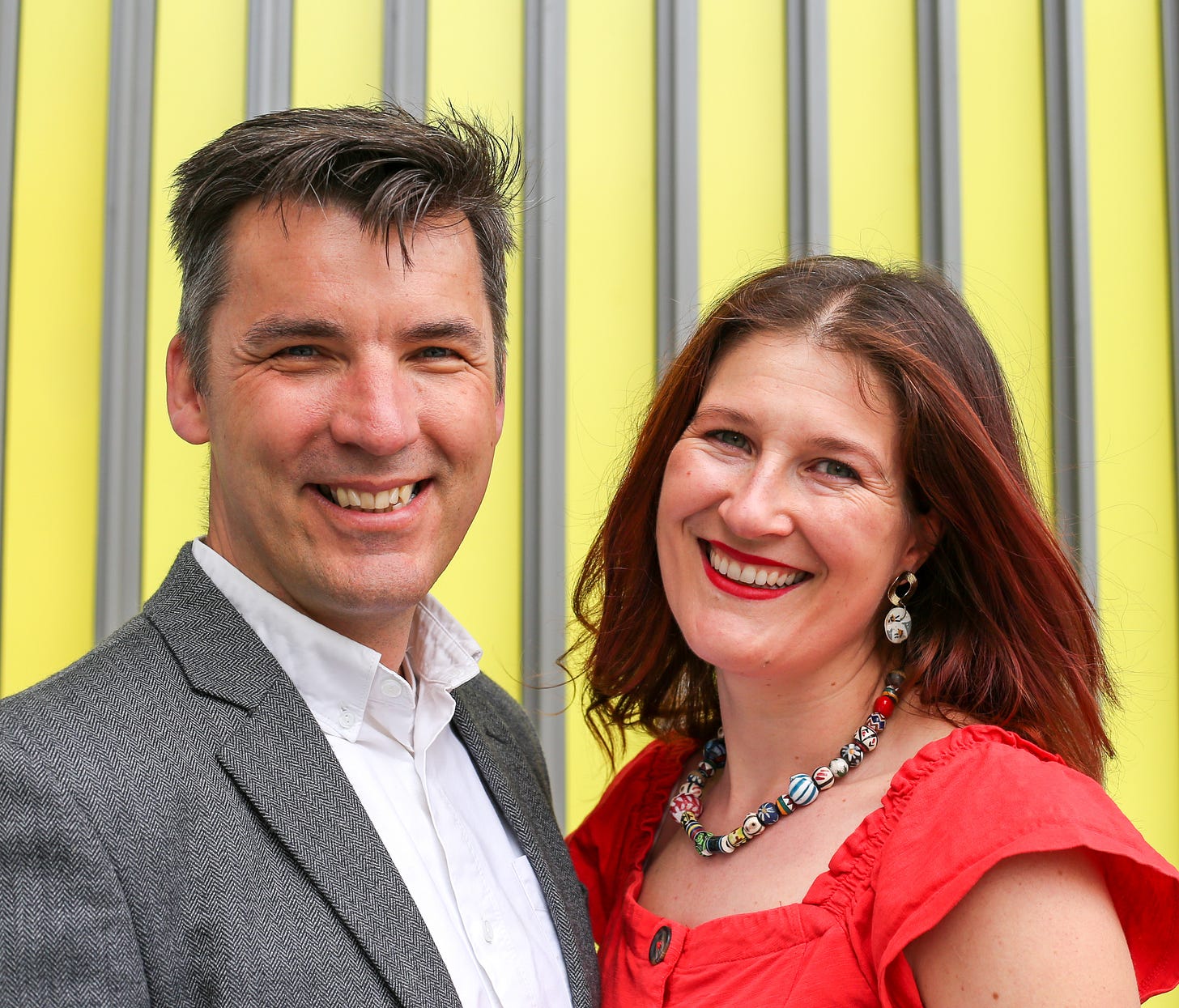Welcome to the Nest Egg!
Today’s edition is for all subscribers, paid and free (if you want weekly posts from us, it’s just £6 or £60 a year - no pressure, but we’ll leave a button here…)
Put the kettle on, give the dog / cat hug and retreat to the sofa for the next ten minutes.
It’s a good one…
Say something rude
We dare you
by Caroline Danks

Sometimes in trust fundraising, we’re given the gift of a funder who doesn’t insist on us filling in their horribly unintuitive, usually a pdf application form.
If you’re one of these then thank you. We love you.
For the moments where we get to exercise our creativity in free form writing, here are three new things I’ve been trying lately.
1. Say something rude
I was peer reviewing a funding application for a colleague last week. I was a little tired, more than a little pre-menstrual and the right words weren’t quite making themselves known.
So I just said the thing.
You can temper the language (or not) later on.
Two reasons why I like to do this:
1. It’s fun to be unedited and a bit sweary! It’s freeing and refreshingly creative (apparently tone policing language is a favoured tool of oppressors). More importantly, it helps you to get to the heart of the issue.
Who doesn’t want clarity, more quickly?
Instead of fishing around for some socially acceptable wording, try clearly stating the problem / the intention / the desired outcome instead, using whatever words you bloody well want to.
I can guarantee you’ll feel fired up and excited to continue.
2. If you know you’ve written something which feels a little way off being audience appropriate / NSFW, you’re more likely to be more vigilant and attentive when it comes to proof reading your work.
Personally, I can be a little lazy when it comes to the editing process.
Knowing I’ve put something in place like an f-bomb (or worse) so that I can’t circumvent it, is helpful in ensuring I do a great job.
2. 2 for the price of 1
Instead of sending a REALLY LONG funding proposal, send two documents instead.
Especially if you’re raising money for a specific project or campaign.
Use the main proposal document to include only the points which are most critical to the argument for funding. The document should stand alone, with the funder able to understand what it is they’re being asked for, how much it will cost and what the impact will be.
Take all the general information about your organisation and put it into a separate document entitled ‘Supplementary info’.
If funders want more context, they have your ‘Supplementary info’ to consult, plus a succinct and to-the-point funding proposal.
3. Change it up
The free-form funding proposals I tend to write, stick to a prescribed format.
In the words of Run DMC, it goes a little something like this:
Summary
Who we are
The problem we’re trying to solve
How we plan to solve it (activities / outputs)
The difference we want to make
Budget
How you can help
For a couple of my clients, I’ve switched things up and have instead gone with the following:
Summary
The difference we want to make
Who we are
The problem we’re trying to solve
How we plan to solve it (activities / outputs)
Budget
How you can help
Spot the difference?
Yes people, we’re leading with the impact.
The reason I made this switch was because two of my clients deliver their work in a way which isn’t the easiest to explain.
Their delivery models are an exception to the norm.
Client 1 provides low-cost offices to local charities from within a heritage building. They also provide volunteering and work experience placements for people who have found it hard to get and keep a job.
Client 2 raises money which it then distributes in grants to smaller, grassroots groups in a niche sector largely excluded from mainstream grant funding.
Explaining the ‘how’ (the activities / outputs’ bit) feels clunky, complex and difficult to envisage, certainly on the first attempt (I got there in the end, I’m a pro).
However, their impact is much easier to explain.
Putting the impact before the mechanics feels like the right thing to do.
Ultimately, it’s not how you do something, it’s the difference it makes right?
So, in summary, here are three things to try today:
1. Say something rude in a first draft application – free yourself from niceties and say it how it is
2. Shorten your proposal considerably by shifting any general information into a separate document / annexe
3. Put the impact of your work front and centre of your proposal
If you liked these tips, please consider sharing this post with someone else who might appreciate them.





